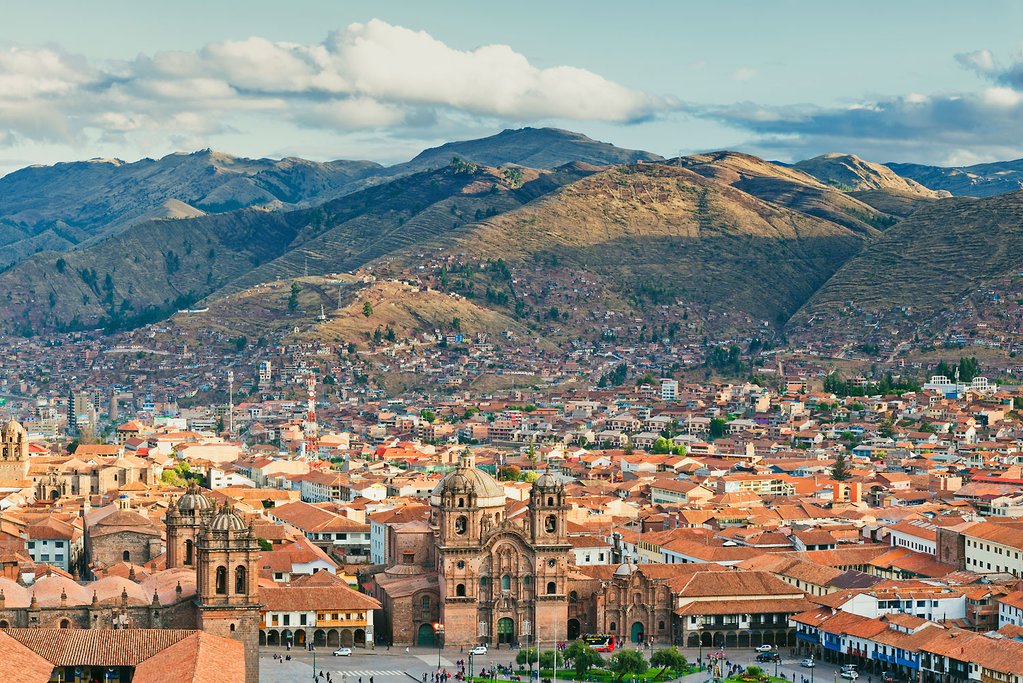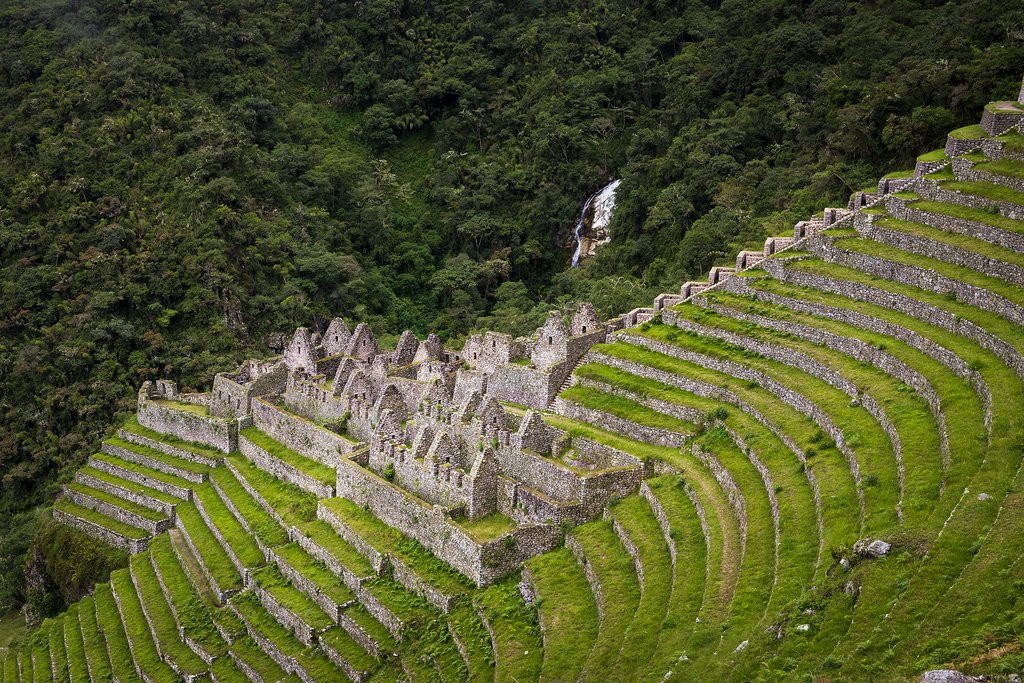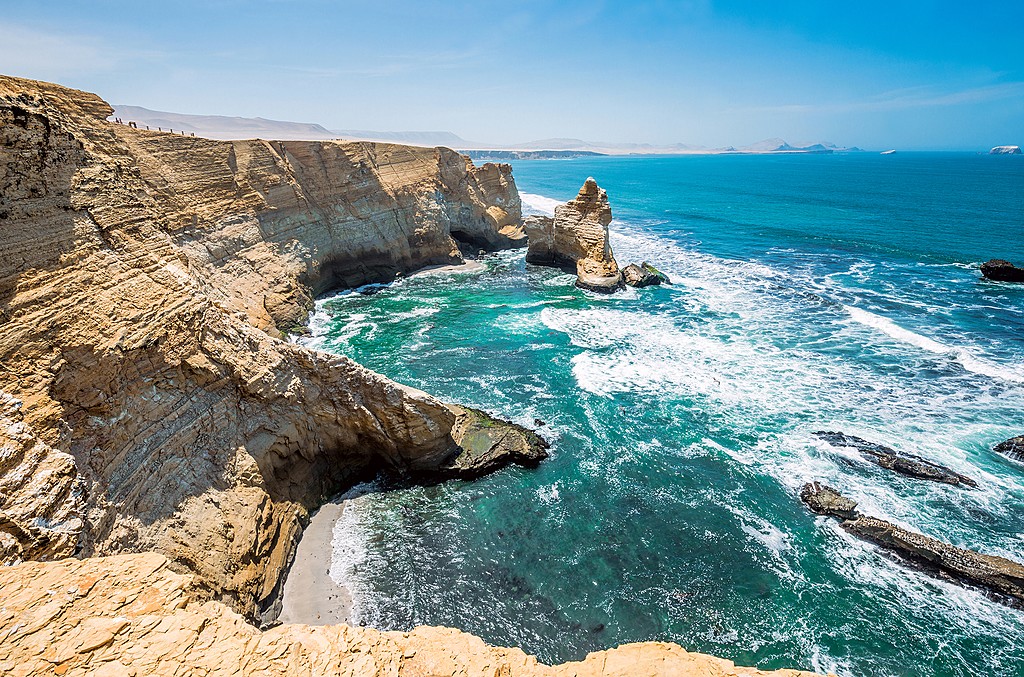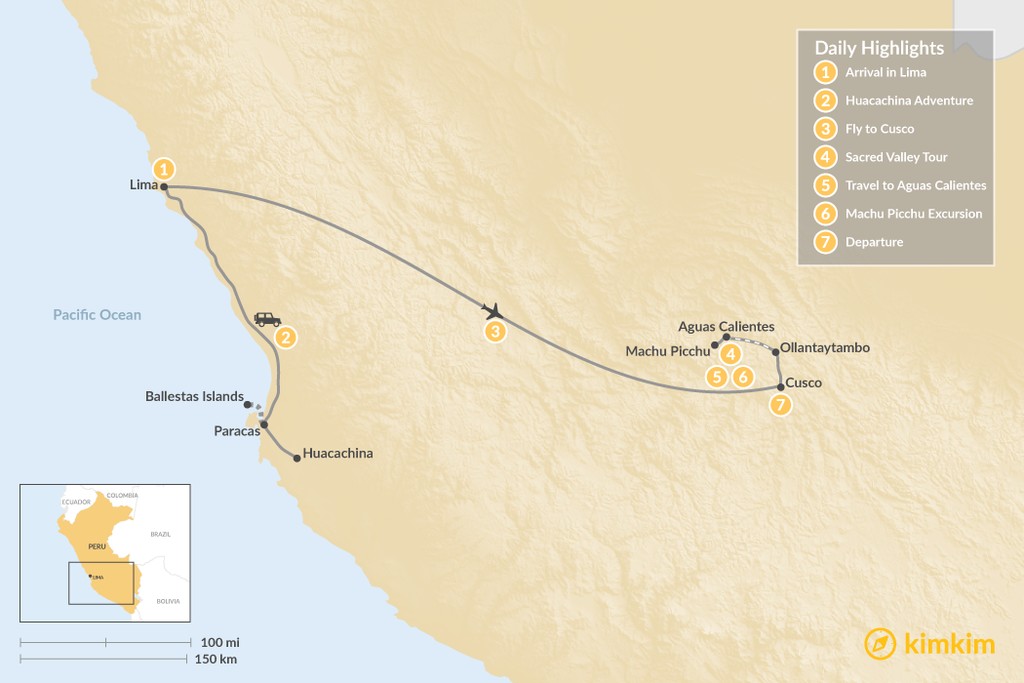Highlights
- Take in the sights and tastes of Lima, Peru's metropolitan capital
- Learn about Peru's coastal wildlife during a trip to the Ballestas Islands
- Hike the Inca trail to see the famed 15th-century Machu Picchu ruins
- Experience local culture in the imperial Inca city of Cusco
Brief Itinerary
| Day | Highlights | Overnight |
|---|---|---|
| Day 1 | Arrival in Lima | Lima |
| Day 2 | Ballestas Islands & Huacachina Adventure | Lima |
| Day 3 | Arrival in Cusco, Inca Ruins Tour | Cusco |
| Day 4 | Sacred Valley Tour: Cusco - Chinchero - Ollantaytambo | Ollantaytambo |
| Day 5 | Short Inca Trail to Machu Picchu: Ollantaytambo - Km 104 - Aguas Calientes | Aguas Calientes |
| Day 6 | Machu Picchu Excursion: Aguas Calientes - Machu Picchu - Cusco | Cusco |
| Day 7 | Departing Cusco |
Detailed Itinerary
Day 1: Arrival in Lima

¡Bienvenidos! Welcome to Lima, Peru's largest city and central metropolitan hub, and home to one-third of the country's population. Located at the site of a pre-Columbian indigenous Ychsma settlement, which was conquered by the Inca empire in the 15th century and later by the Spanish conquistadores, Lima has a fascinating history and a diverse mix of cultures. Amerindian, European, Afro-Peruvian, and Asian—especially Chinese and Japanese—influences make Lima a dynamic and exciting city to explore.
Lima's breezy location on the Pacific Ocean and mild desert climate make it the perfect city for exploring on foot. Head downtown to mingle with locals, stretch your legs, and grab a bite to eat in one of the many award-winning restaurants.
Suggested activities include:
- Explore the historic center of Lima, a UNESCO World Heritage Site packed with fascinating Spanish architecture. Start with a scenic tour of the colonial downtown, which emanates from the main square. Stroll over to the 16th-century Cathedral, which took 80 years to construct and was built in the grandiose style of the Spanish Empire.
- Visit the Casa Aliaga, a colonial mansion granted by chief conquistador Francisco Pizarro to Jerónimo de Aliaga, one of his captains, in 1535. This is the only house from that era that still belongs to the same family.
- Stroll around the Pueblo Libre district to the privately owned Larco Museum of pre-Columbian art, housed in a beautifully restored viceregal mansion built over a 7th-century pre-Columbian pyramid. The museum boasts a vast pre-Colonial collection of gold and silver artifacts.
- In the evening, head to the eclectic "Love Park" in the upscale coastal district of Miraflores, where you can admire a huge kissing statue and beautiful mosaic walls. The park is built on the cliffs of Chorrillos and is a perfect place to enjoy a spectacular sunset over the Pacific.
- Enjoy a nightcap at an open-air cafe or restaurant in the diverse Miraflores neighborhood.
Day 2: Ballestas Islands & Huacachina Adventure

Depart your hotel in Lima at 4:00 AM to get an early start for your eco-tourism adventure. After a 3.5-hour trip south, arrive in Pisco's port—that launch point for today's trip. From here the tour heads west to the Ballestas Islands, a group of small rocky islands that provide vital nesting grounds for marine birds like the guanay guano bird, the blue-footed booby, and the tendril. These outcroppings are also home to fur seals and sea lions, as well as other mammals. The most notable characters of this island are the Humboldt penguins, which live along the Pacific coast of Chile and Peru.
On the way to the islands, you will pass the Paracas Candelabra, a pre-historic geoglyph which dates back to 200 BCE and pre-dates the Inca Empire by 1600 years. Dug several feet into the ground, this 595 ft (181 m) tall motif can be seen 12 miles (19.3 km) out at sea, and might have served as a beacon to sailors.
After returning to port, head to Huacachina for an adrenaline rush in the sand dunes by trying your hand at sandboarding on some of the larger sand dunes.
Return to Lima in the evening.
Day 3: Arrival in Cusco, Inca Ruins Tour

Head to the Lima airport for your transfer flight to Cusco. After settling in, head out for your day tour of the former capital of the Inca empire, which reigned from the 13th to 16th centuries after conquering the Killke settlement on the same location.
Remember: you will be 11,000 feet (3,000 m) above sea level, so take it easy and remember to drink lots of water. Since Cusco was designed by the Incas as a city for walking, start your exploration of the narrow stone alleyways on foot. Take a walk through the plaza — if the weather is beautiful, it's a perfect place to sit on a balcony and have a cup of coca tea while adjusting to the elevation.
Suggested activities include:
- Visit the Coricancha, also known as "The Temple of the Sun." The temple was built by the Incan Emperor Pachacutec (1438 - 1572), and after the arrival of the Spaniards became the basis for the construction of the Santo Domingo Convent.
- Walk to Sacsayhuamán and next-door Quenqo, both archaeological complexes used mostly for religious and agricultural rituals, located 2.5 miles (4 km) from the city of Cusco. Built by the Killke people, Sacsayhuamán is a marvel of ancient architecture, a monolithic fortress built from giant blocks of stone, the origins and assembly of which remain a mystery.
- Discover the elaborate Puca Pucara ruins—an architectural complex of alleged military use with multiple plazas, baths, aqueducts, walls, and towers. It is believed that the entourage of the Incan emperor used it while he stayed at Tambomachay, the elaborate estate and baths nearby.
- Eat lunch at a local Peruvian restaurant and sample local flavors and cooking techniques—crackling pork, pickled vegetables, seasonal flavors, bread baked in earthen ovens, roasted vegetables, and sweet donuts make for a delicious and filling meal.
Chat with a local specialist who can help organize your trip.
Day 4: Sacred Valley Tour: Cusco - Chinchero - Ollantaytambo

This morning you will depart from your hotel in Cusco and travel to the town of Chinchero, which the Inca believed to be the birthplace of the rainbow. In this typical Andean village you can see extensive Inca terracing and some pretty colonial-era churches. The town is also known for its weaving studios – you'll have a chance to see the weavers producing handmade products.
From Chinchero you'll continue to Moray, an incredible complex of stone amphitheaters developed by the Inca. While the exact reason for the construction of this site remains unknown, historians believe the Inca constructed in order to experiment with crop production in different micro-climates.
From Moray, you will walk through farmlands (or take a bus if you prefer) to Salineras, an incredible patchwork of stone pools and paths developed by the Inca as a means to harvest salt. Spend the night in Ollantaytambo, a historic town in the Sacred Valley, set on the Urubamba River, overlooked by massive stone fortresses. You'll have a chance to explore this charming village, its cobbled streets, and pretty central plazas.
Day 5: Short Inca Trail to Machu Picchu: Ollantaytambo - Km 104 - Aguas Calientes

Early in the morning, we will take the train from Ollantaytambo to Km 104 where the short Inca Trail starts. By train, we see how the valley turns into a canyon and the scenery begins to alter as the cloud forests appear on our approach to Machu Picchu. We will disembark the train at Km 104 and start the hike along a challenging uphill path.
Start the trek to your first archeological site—Chachabamba. This beautiful site is very well preserved thanks to its location in the valley and was likely used for religious purposes and as a gatekeeping point for this entrance to Machu Picchu.
From here ascend for 3 hours to the ruins of Wiñay Wayna (2732 m / 8964 ft), an ancient rest area for travelers on the Inca trail. Here, we'll stop to enjoy our delicious boxed lunch, with superb views of the massive green mountains and native orchids.
The trail then becomes gentler and continues through the semi-tropical cloud forest to Intipunku (Sun Gate) where you'll enjoy your first panoramic views of Machu Picchu. Descend half an hour to the citadel for a short break and an opportunity for photos.
We won't be exploring the ruins today, as it will be getting dark. After passing through the Sun Gate, we'll cross the site to take the bus down to Aguas Calientes, where you'll check into our hotel to rest and relax in anticipation of a full-day visit to Machu Picchu tomorrow.
Maximum Altitude: 2732 m / 8964 ft
Minimum Altitude: 2088 m / 6850 ft
Distance Travelled: 10.79 km / 6.67 ml (to Inti Punku)
Approximate Walking Time: 7 hours
Day 6: Machu Picchu Excursion: Aguas Calientes - Machu Picchu - Cusco

After an early breakfast, take the first bus up to the Machu Picchu ruins to catch the sunrise at the ancient site. This 15th-century Inca citadel is located at 7,970 ft (2,430 m) and is a masterpiece of engineering that served as a sanctuary and retreat for the Incan Emperor Pachacutec and his royal court. Machu Picchu, which means "Old Mountain," is considered a World Heritage Site by UNESCO and is one of the new Seven Wonders of the World.
Built as a seasonal residence for the Inca family, Machu Picchu was rarely home to more than 800 people, and during the royals' absence, a mere 100 servants would remain at the site to maintain the grounds. Machu Picchu was abandoned 100 years after construction due to the Spanish conquest and remained largely hidden to the outside world until the early 20th century.
Your guide will lead you around the site and explain the different buildings and curious corners of the building complex. Approximately one-third of the site has been reconstructed into its original structure, giving visitors a sense for the grandeur and artistry of the original citadel.
If you feel like an uphill challenge, you have the option to climb the infamous Huayna Picchu or Machu Picchu Mountain. It is important to know that to climb these peaks, you need to buy separate tickets in advance.
After the two-hour tour, take the bus back to Aguas Calientes to connect to your train to Ollantaytambo and your connecting transfer to Cusco.
Day 7: Departing Cusco

Today is your last day in Peru! You will be met at your hotel for a transfer to the Cusco Airport, where you will transfer to your international departure. Alternatively, stay and extend your time in Peru — there's so much to see and explore. ¡Buen viaje!


